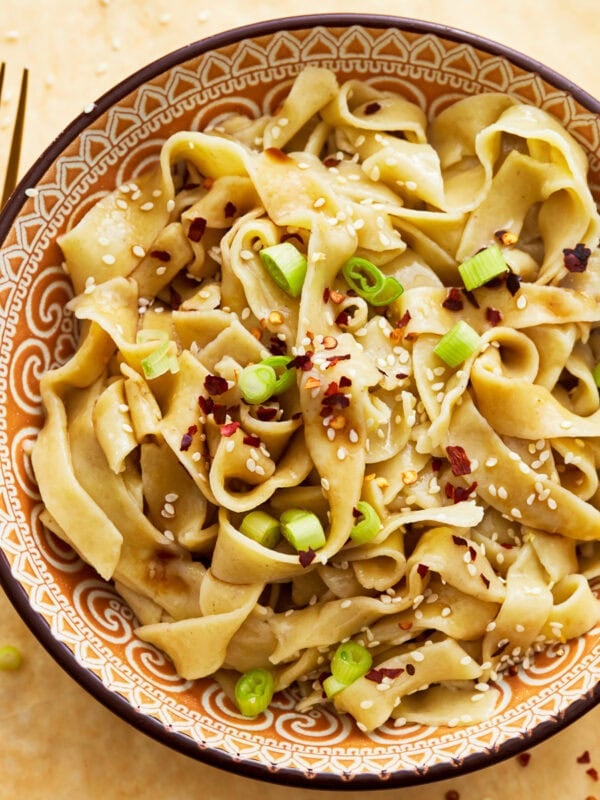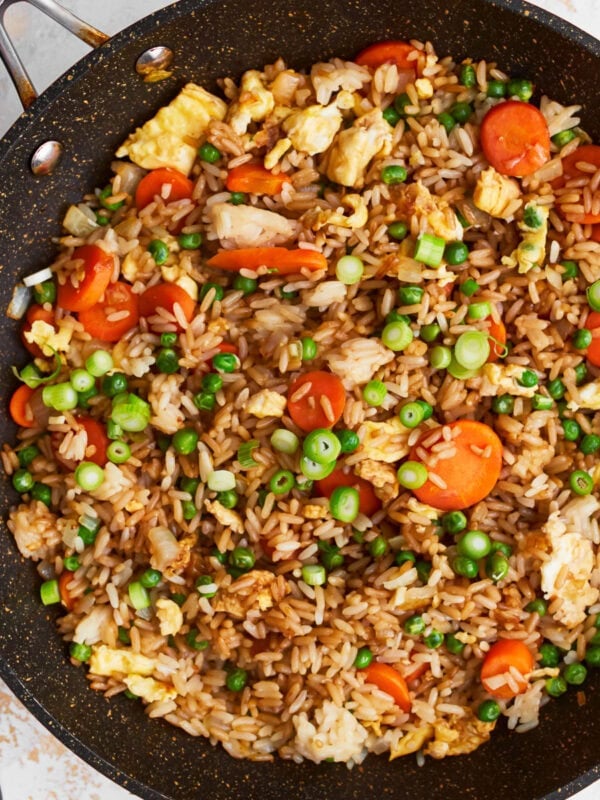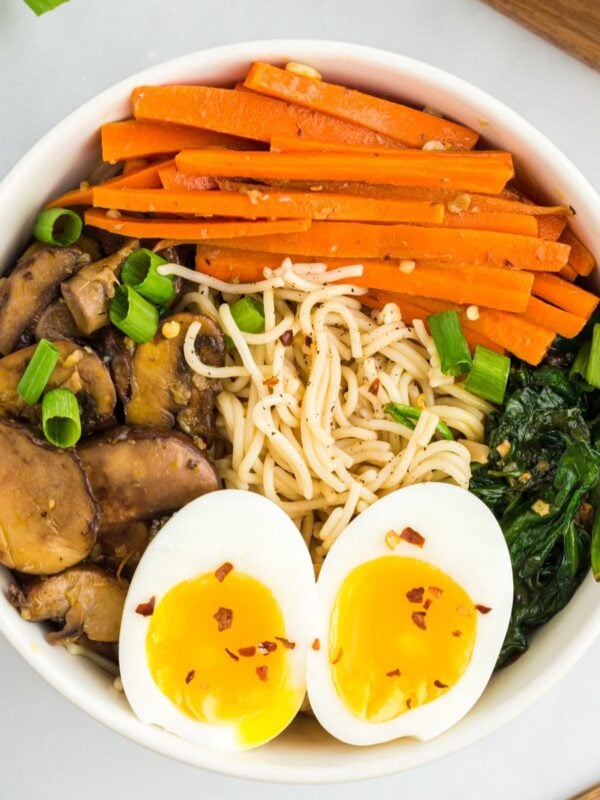This post may contain affiliate links. To learn more check my disclosure page.
This homemade almond flour pasta gives my dinners a nutritious (yet oh-so-delicious) upgrade! My recipe uses almond flour as the base for a simple pasta dough, which cooks perfectly al dente and holds up well against heavy sauces and toppings. It’s also packed with protein and is naturally gluten-free, grain-free, and dairy-free. And don’t worry—my recipe doesn’t include any fancy equipment or techniques! I’m not kidding when I say anyone can make this pasta at home.
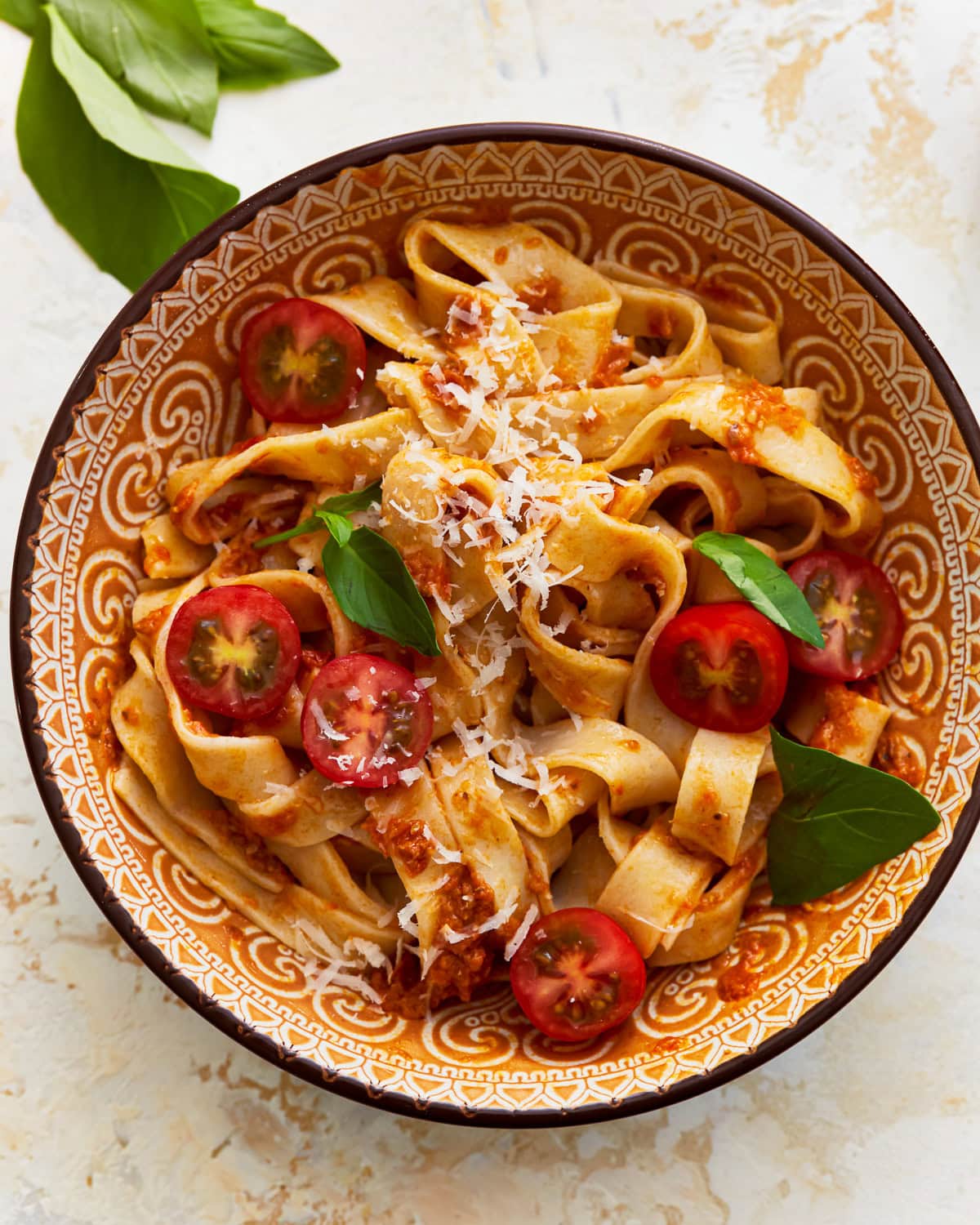
Almond Flour Pasta Recipe
Once I mastered my homemade gluten-free pasta recipe, I knew I couldn’t stop there. I started experimenting with different types of flour, including almond flour, to see if I could make even more gluten-free pasta variations. This is how I know you can successfully make pasta with almond flour! I mix it with tapioca starch, xanthan gum, olive oil, and eggs to create a pliable dough that rolls out great—even if you don’t have a pasta machine. Then, when cooked, the pasta is silky smooth with a satisfying chewy texture. You don’t know what you’re missing until you try it for yourself!
Ingredients
- Almond Flour: Use fine, blanched almond flour—not almond meal. Almond flour is made from blanched almonds with the skins removed, while almond meal is made from whole almonds, skins included. Almond flour is much finer and creates a smoother pasta dough. You can use store-bought or homemade almond flour (it’s really easy to make!).
- Tapioca Starch: When I tried this recipe using only almond flour, the pasta dough was too brittle and fell apart. Tapioca starch helps to bind the dough and gives it structure.
- Xanthan Gum: Adds elasticity to make the dough easier to roll out and shape. Don’t leave this ingredient out!
- Salt: Flavors the almond flour pasta noodles.
- Eggs: Use large eggs for the best results. Small or medium eggs won’t add enough moisture to the dough.
- Water: Helps the ingredients to form a cohesive dough.
- Olive Oil: Adds richness to the pasta and helps prevent sticking.

Tips and Suggestions
- The dough will seem lumpy at first, but it’ll get smoother as you knead it. And don’t worry about overworking the dough—there’s no gluten to toughen it up!
- If your dough seems a little dry during the kneading process, add a teaspoon of water at a time until it looks and feels smoother.
- Don’t forget to let the dough rest for at least 30 minutes before rolling it out. This will allow the ingredients to fully come together and create a more pliable dough.
- Lay the pasta dough on parchment paper while rolling it out to prevent sticking.
- You can shape the pasta in any way you prefer! Cut it into thin noodles as I have, make ravioli, or even shape it into gnocchi-like dumplings.
- Be careful not to overcook the pasta! Fresh pasta cooks much quicker than dried.
- Make this recipe for almond flour pasta ahead of time and store the dough in the refrigerator for up to 2 days. Wrap it tightly in plastic wrap or place it in an airtight container before refrigerating.
Can I Dry Almond Flour Pasta?
You can! Hang the pasta on a pasta drying rack or arrange it flat on a lightly floured surface. Allow the pasta to dry completely for several hours or overnight, then store it in an airtight container in a cool, dry place for up to 2 weeks. Dried pasta should be cooked for about 5-6 minutes until al dente.

Can I Use a Different Starch?
I prefer tapioca starch for this recipe because it gives the pasta a great texture and holds together well. However, you can substitute it with arrowroot starch or potato starch in a 1:1 ratio. Arrowroot starch is also a good option if you follow a paleo diet.
How to Serve Almond Flour Pasta
Treat this homemade pasta with almond flour as you would any other pasta. Here are some of my favorite ways to serve it:
- Topped with pesto, tomatoes, and fresh basil
- Piled high with gluten-free meatballs or spaghetti sauce
- Mixed with sautéed veggies and gluten-free Alfredo sauce
- Cold in a creamy Italian pasta salad (cook the pasta first, then cool it)
- Tossed with garlic, olive oil, and grilled shrimp or chicken
- Alongside warm gluten-free garlic bread
Storage Instructions
Cooked almond flour noodles can be stored in the fridge in an airtight container for up to 3 days. You can also store the uncooked almond flour pasta dough in the fridge for up to 2 days or freeze it for up to 3 months. Arrange the cut pasta in a single layer on a baking sheet, freeze until solid, and transfer to a freezer-safe bag. Cook the pasta from frozen by adding a minute or two to the cooking time.

More Almond Flour Recipes to Try!
- Almond Flour Pizza Crust
- Almond Flour Tortillas
- Almond Flour Bread
- Almond Flour Chocolate Cake
- Almond Flour Pancakes
Almond Flour Pasta

Ingredients
- 1 cup almond flour
- 1 teaspoon xanthan gum
- ¾ cup tapioca starch
- ½ teaspoon salt
- 3 large eggs
- 2 tablespoons water
- 1 tablespoon olive oil
Instructions
- In a large mixing bowl, whisk together the almond flour, tapioca starch, xanthan gum, and salt until well combined.
- Create a well in the center of the dry ingredients. Crack the eggs into the well, and add the water and olive oil.
- Using a fork, gradually incorporate the dry ingredients into the wet ingredients, mixing until a shaggy dough forms.
- Turn the dough onto a clean work surface and knead for about 2-3 minutes until it comes together into a smooth, pliable ball. If the dough seems too dry, add a teaspoon of water at a time until it reaches the desired consistency.
- Cover the dough with plastic wrap and let it rest for 30 minutes.
- Divide the dough into 4 equal pieces. Working with one piece at a time (cover the remaining pieces to prevent drying out), use a rolling pin or a pasta machine to roll the dough into thin sheets, approximately ⅛ inch thick.
- Cut the rolled-out dough into desired pasta shapes using a knife or a pasta cutter.
- To cook the fresh almond flour pasta, bring a large pot of salted water to a rolling boil. Add the pasta and cook for 2 minutes, or until the pasta floats to the surface and is al dente.
- Drain the cooked pasta and toss it with your favorite sauce or toppings. Serve hot and enjoy.
Notes
-
- Use fine, blanched almond flour, not almond meal.
- Make the pasta dough ahead of time by storing in an airtight container in the fridge for up to 2 days.
- Dry the pasta on a drying rack or lay flat on a floured surface overnight. Store in an airtight container for up to 2 weeks. Cook the dried pasta for 5-6 minutes until done.
-
- To Store: The cooked pasta keeps well in the fridge for up to 3 days. Refrigerate the uncooked pasta dough for up to 2 days. Always wrap in plastic wrap or store in an airtight container for freshness.
- To Freeze: Shape the pasta dough and lay each piece on in a single layer on a baking sheet. Freeze until solid and then store in an freezer-safe container for up to 3 months. Cook the pasta from frozen for 3-4 minutes.
- Mama says, “Check all of your labels!”
Nutrition
Nutrition information is automatically calculated, so should only be used as an approximation.
How to Make Pasta with Almond Flour Step-by-Step
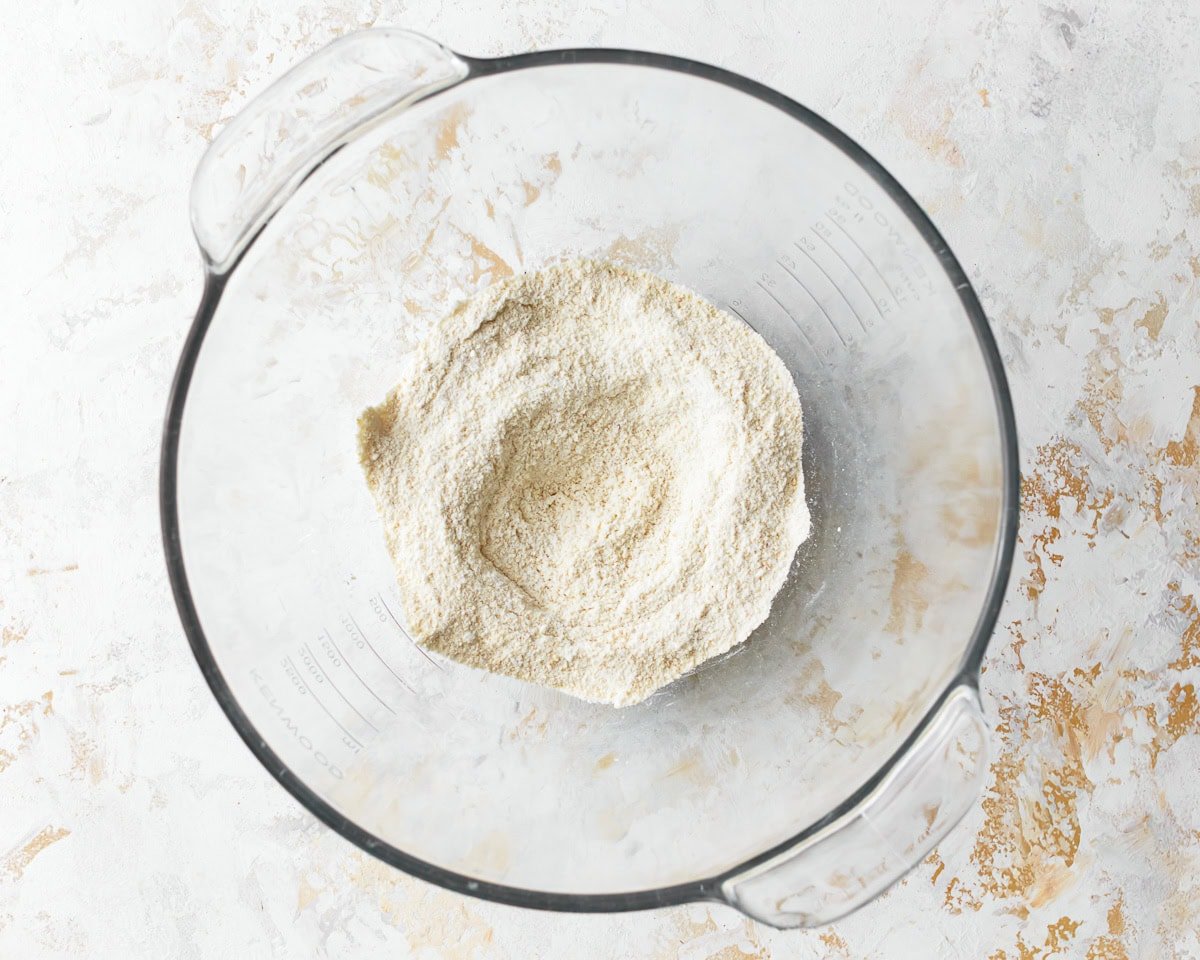
In a large mixing bowl, whisk together 1 cup almond flour, ¾ cup tapioca starch, 1 teaspoon xanthan gum, and ½ teaspoon salt until well combined.
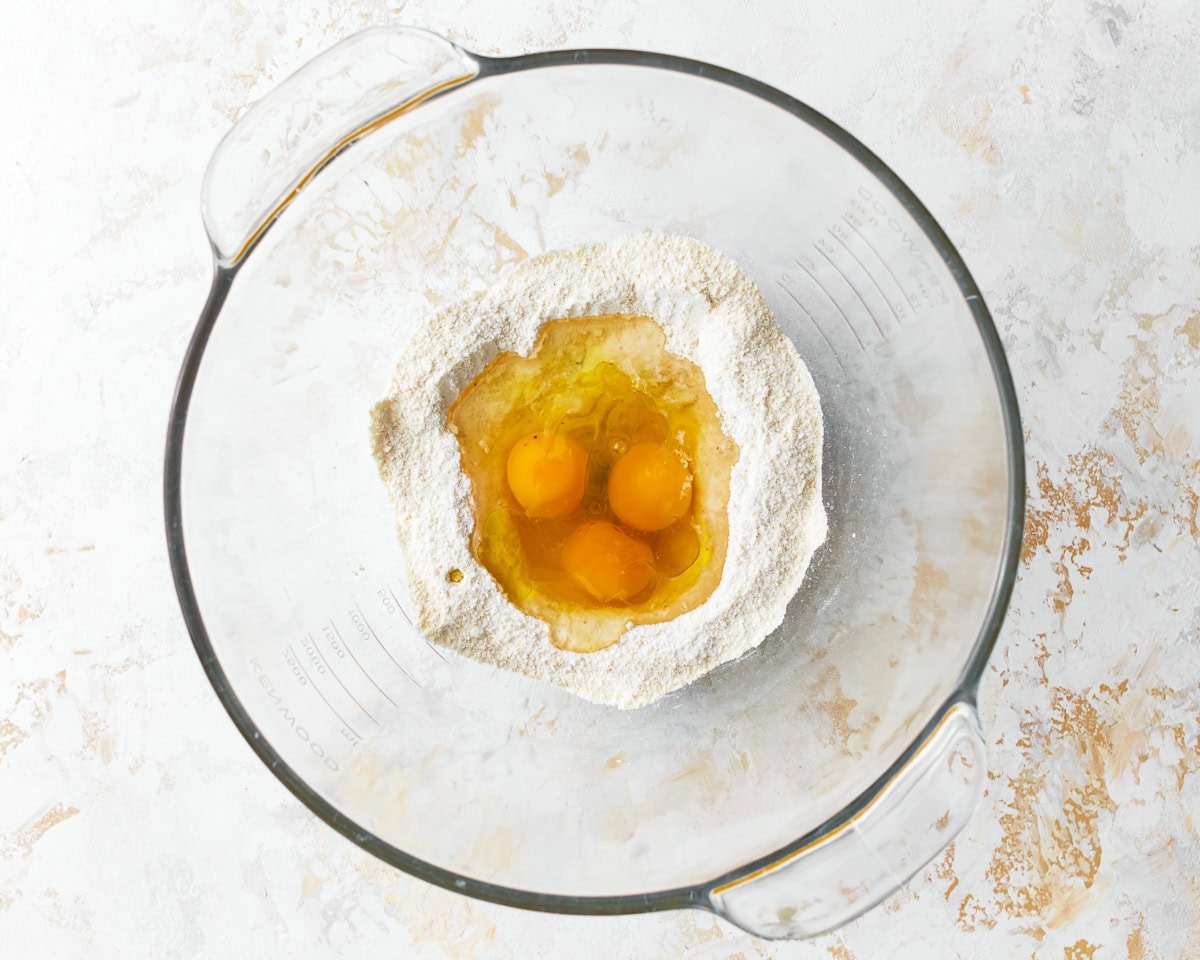
Create a well in the center of the dry ingredients. Crack 3 large eggs into the well, and add 2 tablespoons water and 1 tablespoon olive oil.
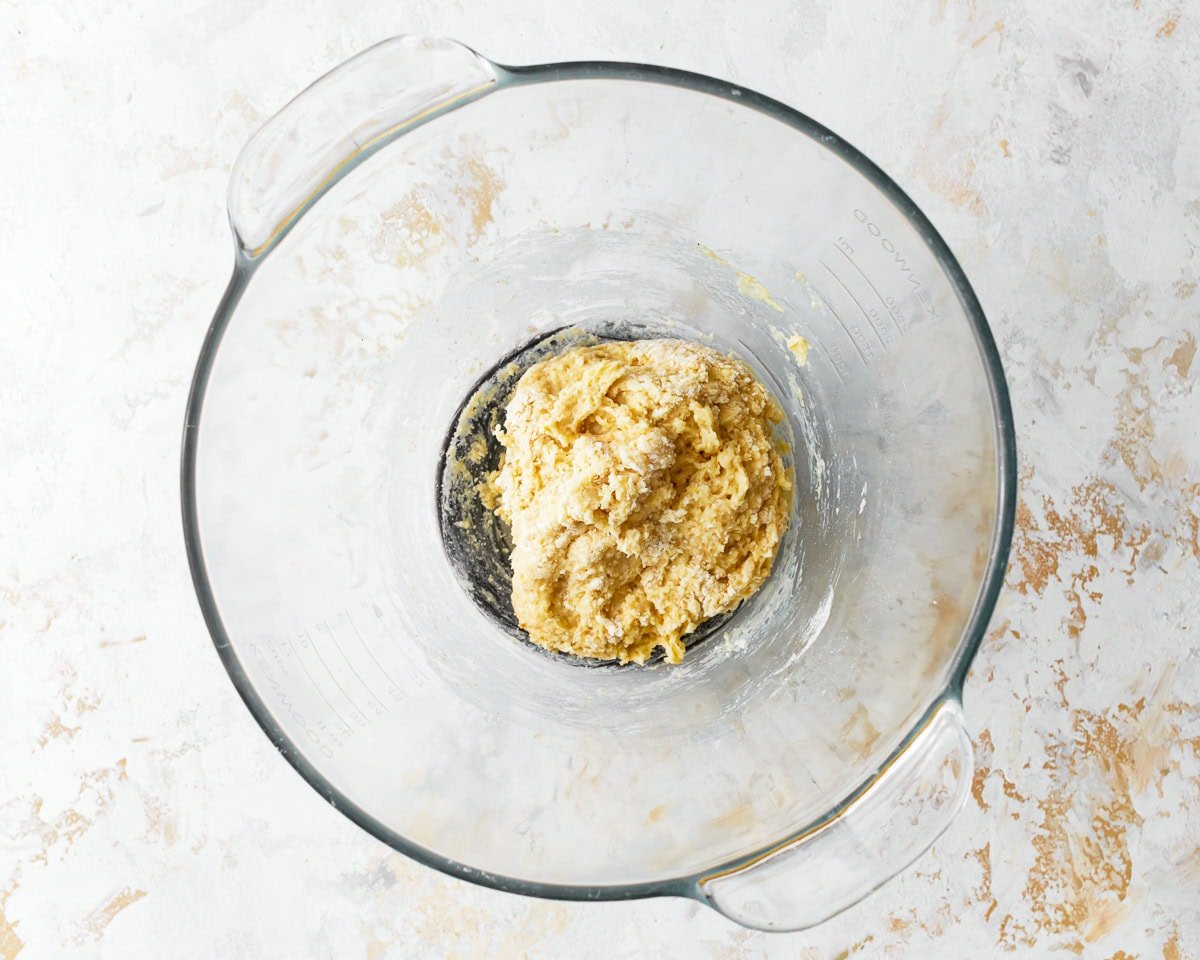
Using a fork, gradually incorporate the dry ingredients into the wet ingredients, mixing until a shaggy dough forms.
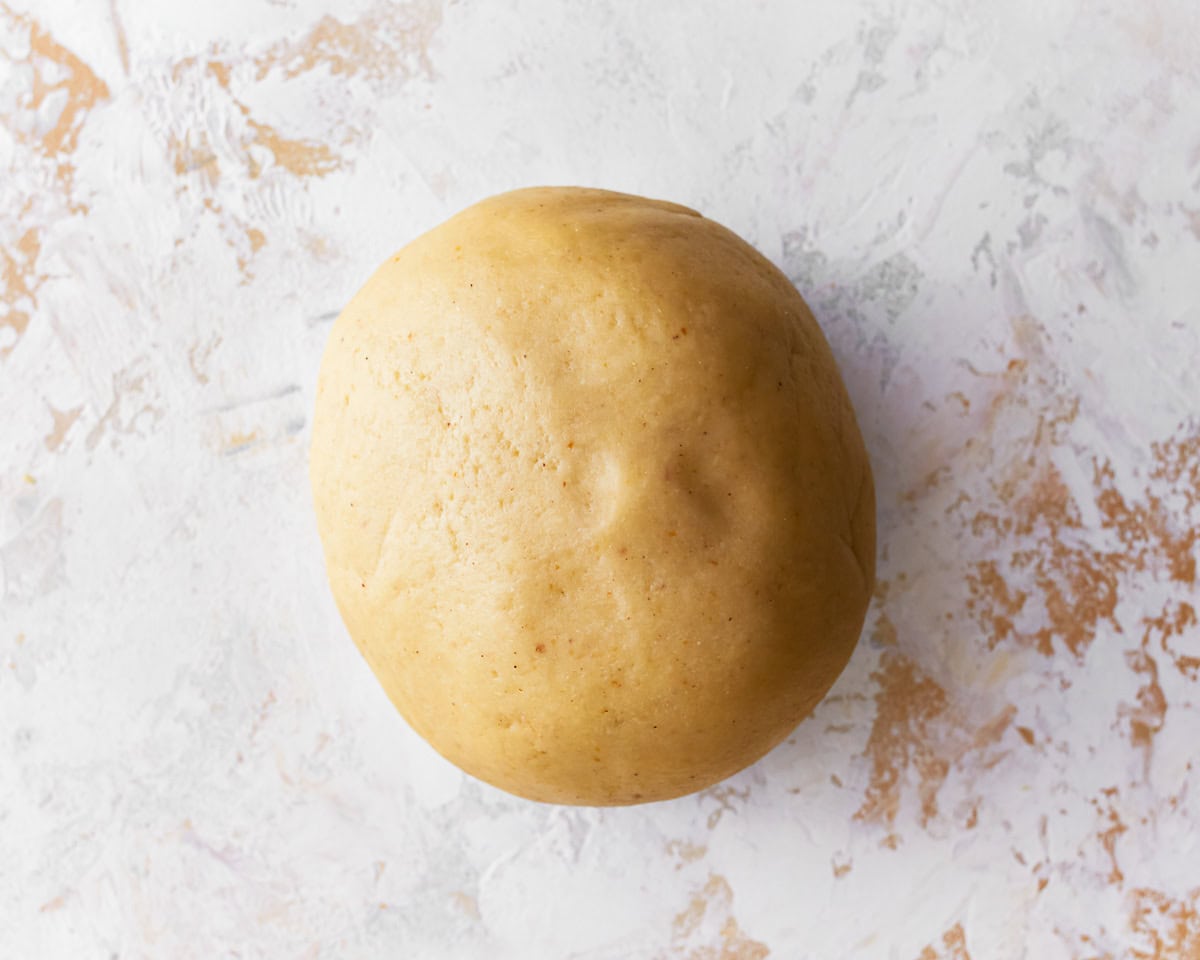
Turn the dough onto a clean work surface and knead for about 2-3 minutes until it comes together into a smooth, pliable ball. If the dough seems too dry, add a teaspoon of water at a time until it reaches the desired consistency.
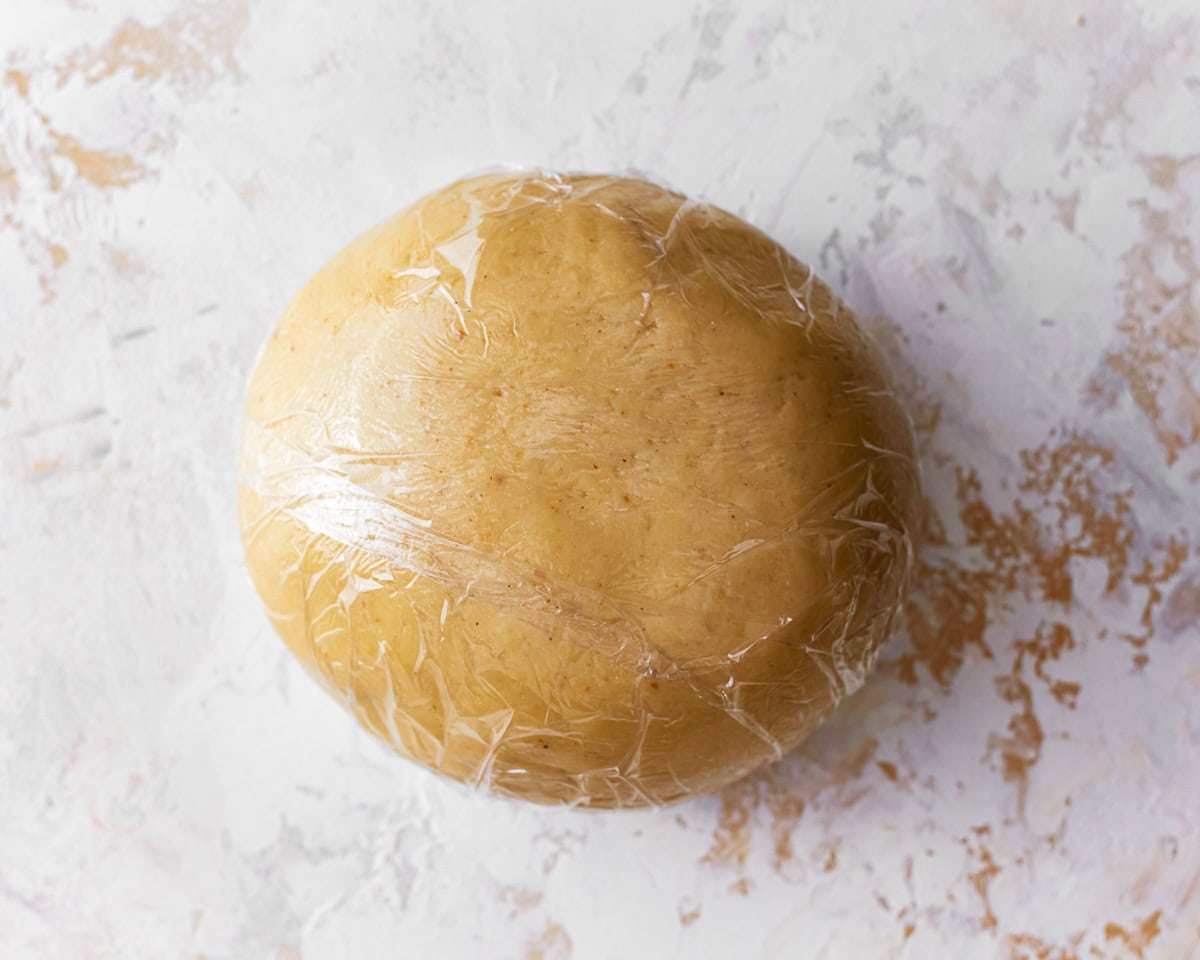
Cover the dough with plastic wrap and let it rest for 30 minutes.
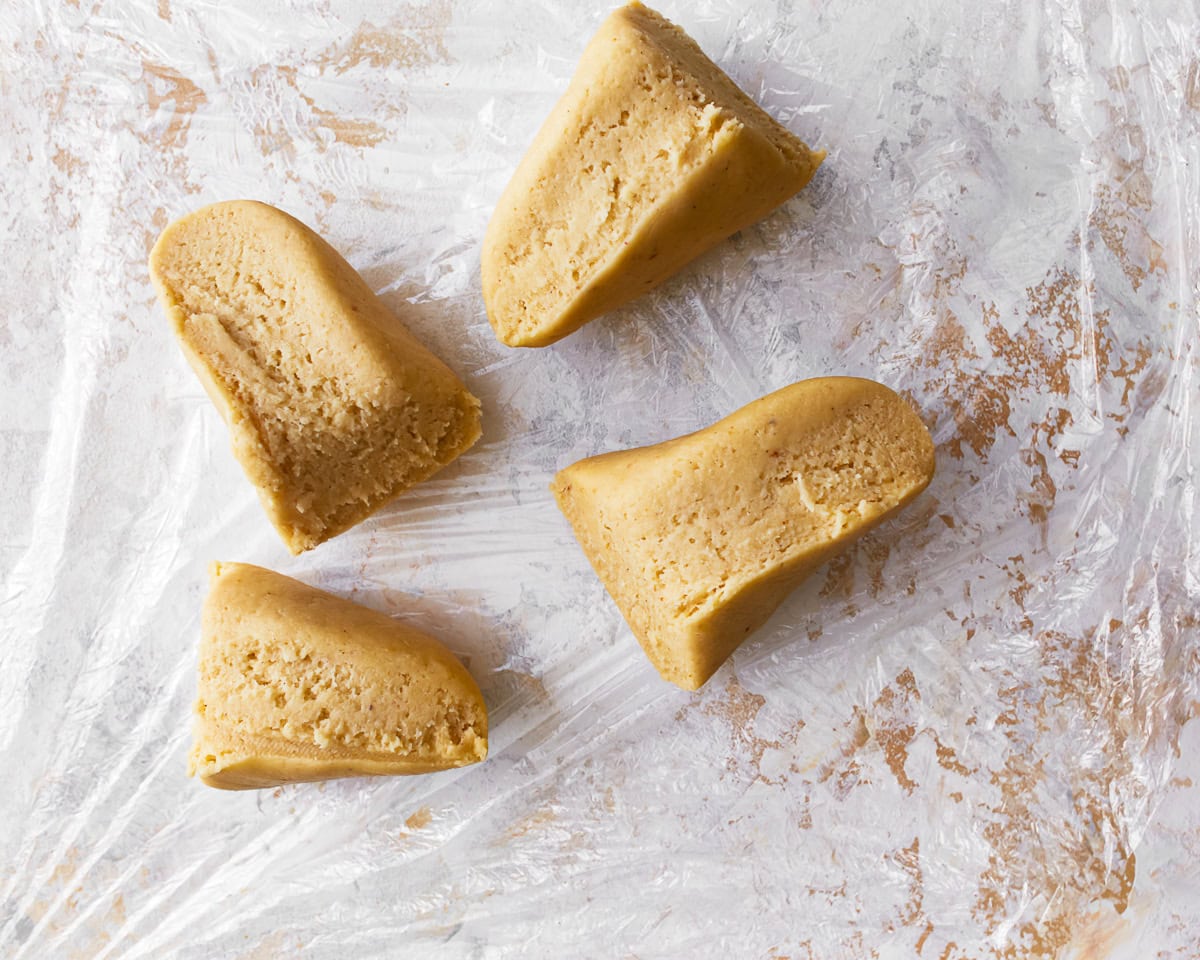
Divide the dough into 4 equal pieces.
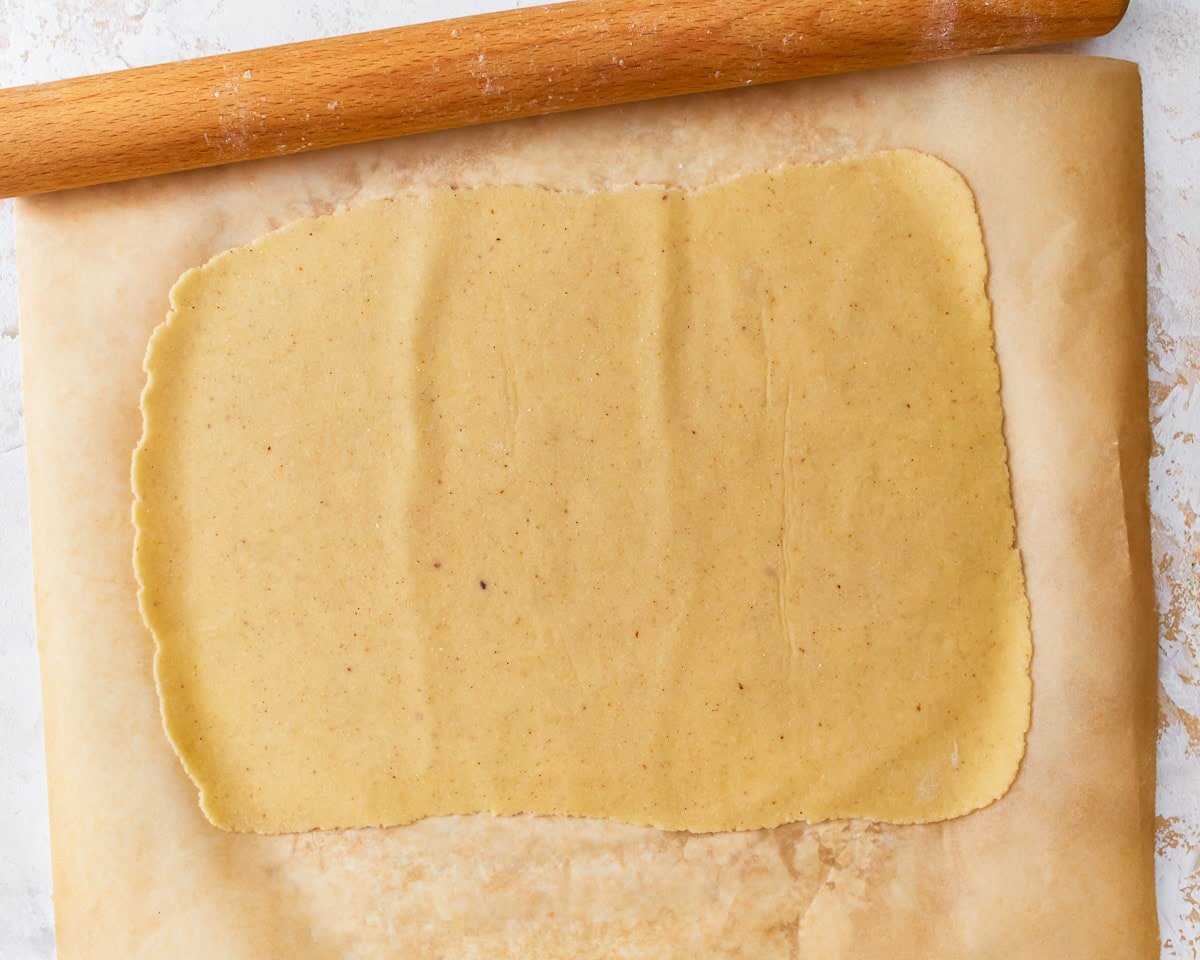
Working with one piece at a time (cover the remaining pieces to prevent drying out), use a rolling pin or a pasta machine to roll the dough into thin sheets, approximately ⅛ inch thick.
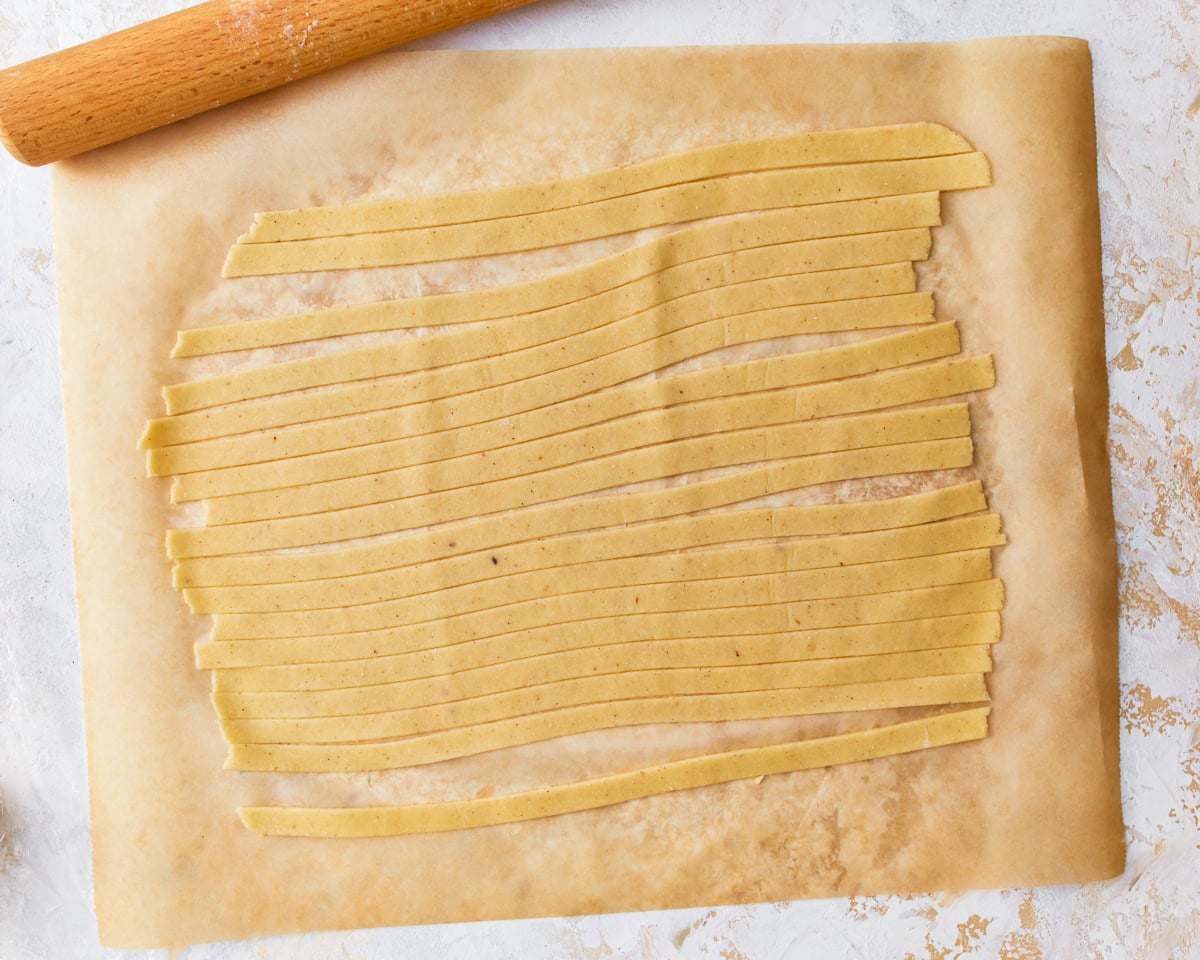
Cut the rolled-out dough into desired pasta shapes using a knife or a pasta cutter.
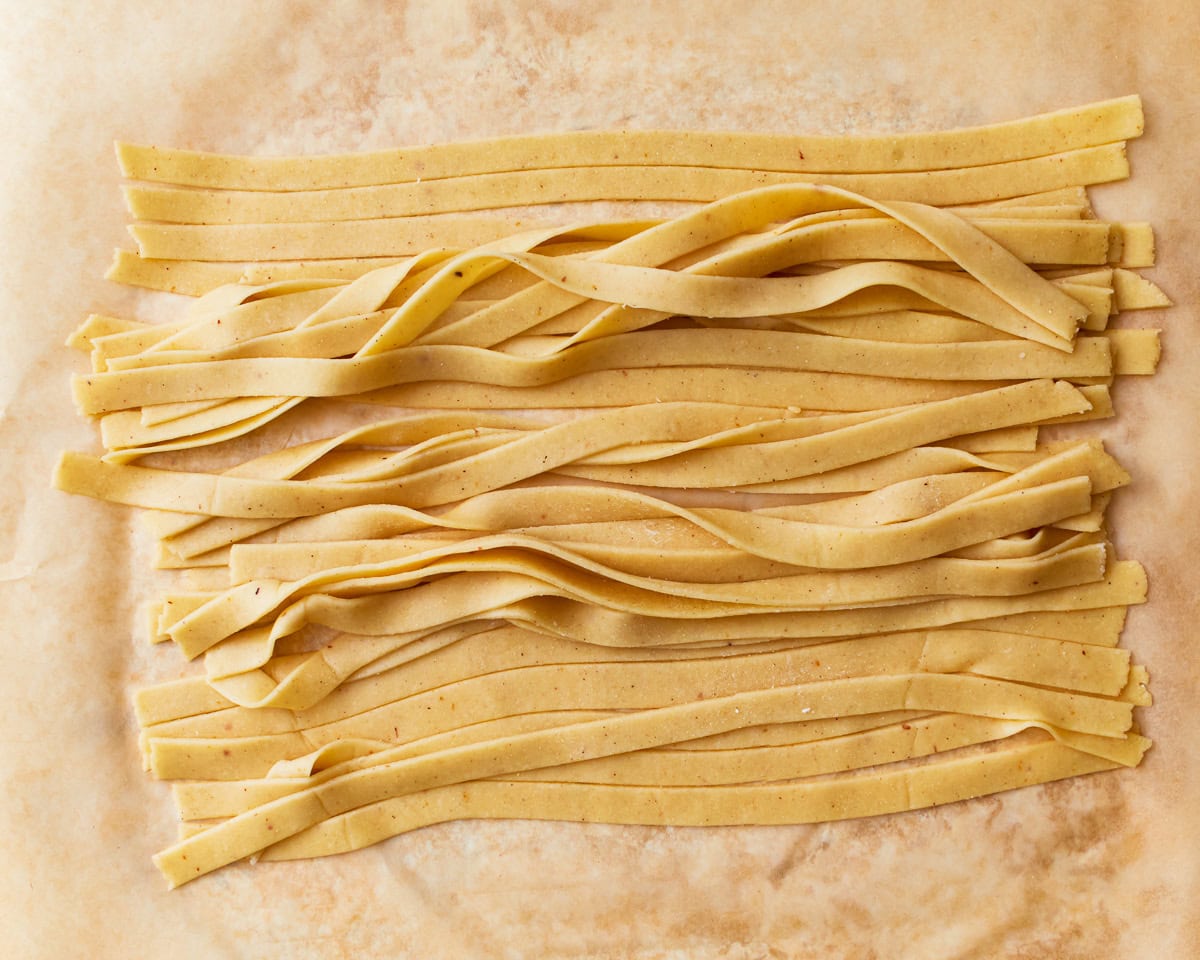
To cook the fresh almond flour pasta, bring a large pot of salted water to a rolling boil. Add the pasta and cook for 2 minutes, or until the pasta floats to the surface and is al dente. Drain the cooked pasta and toss it with your favorite sauce or toppings. Serve hot and enjoy.




